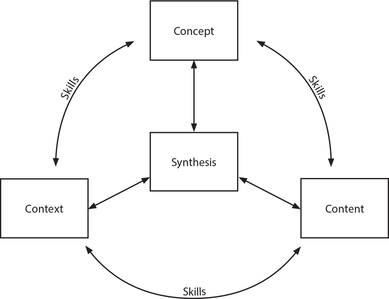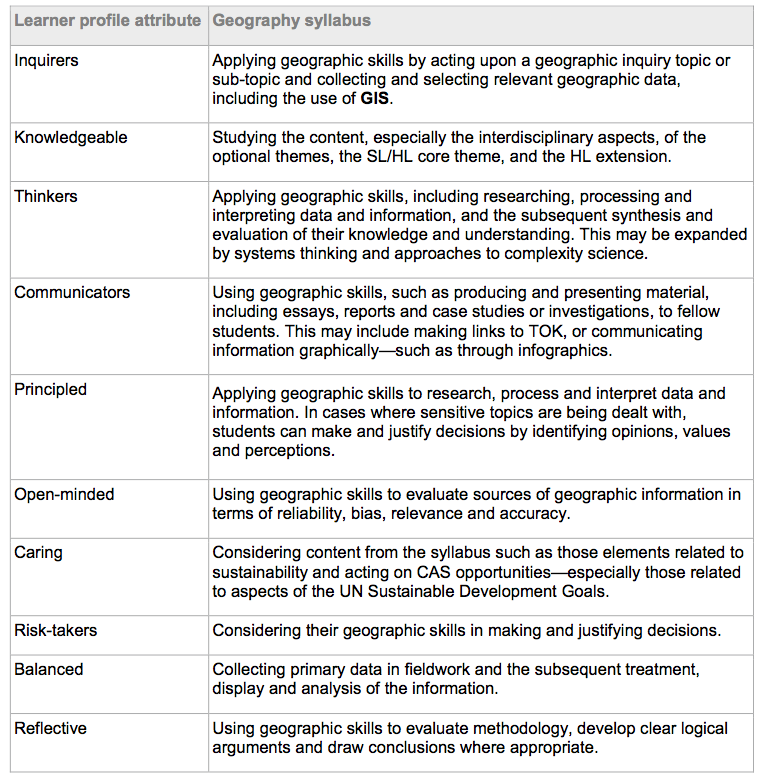About IB Diploma Geography
Introduction to IB Diploma Geography
You can find the IB Geography Guide here IB Geography Guide
Geography is a dynamic subject that is firmly grounded in the real world and focuses on the interactions between individuals, societies and physical processes in both time and space. It seeks to identify trends and patterns in these interactions. It also investigates the way in which people adapt and respond to change, and evaluates actual and possible management strategies associated with such change. Geography describes and helps to explain the similarities and differences between different places. These may be defined on a variety of scales and from the perspectives of a different range of actors, with varying powers over decision-making processes.
The Diploma Programme geography course integrates physical, environmental and human geography, and ensures that students acquire elements of both socio‑economic and scientific methodologies. Geography takes advantage of its position to examine relevant concepts and ideas from a wide variety of disciplines. This helps students develop life skills and have an appreciation of, and a respect for, alternative approaches, viewpoints and ideas.
Geography is a dynamic subject that is firmly grounded in the real world and focuses on the interactions between individuals, societies and physical processes in both time and space. It seeks to identify trends and patterns in these interactions. It also investigates the way in which people adapt and respond to change, and evaluates actual and possible management strategies associated with such change. Geography describes and helps to explain the similarities and differences between different places. These may be defined on a variety of scales and from the perspectives of a different range of actors, with varying powers over decision-making processes.
The Diploma Programme geography course integrates physical, environmental and human geography, and ensures that students acquire elements of both socio‑economic and scientific methodologies. Geography takes advantage of its position to examine relevant concepts and ideas from a wide variety of disciplines. This helps students develop life skills and have an appreciation of, and a respect for, alternative approaches, viewpoints and ideas.
Aims of IB GeographyThe aims of the geography course at SL and HL are to enable students to:
Conceptual and contextual approach to the geography course |
The opportunity to have concepts in the foreground of the curriculum topics and the focus for geographic inquiry allow for more discussion, application of thinking skills, and transparent assessments. Students are required to discuss or evaluate in a way that shows conceptual insight into the context of the expected knowledge and understanding.
The application of geographic skills allow for the synthesis of knowledge and ideas, and bring understanding of concepts and contexts together through the study of specified or appropriate content.
The application of geographic skills allow for the synthesis of knowledge and ideas, and bring understanding of concepts and contexts together through the study of specified or appropriate content.
IB Geography Concepts
The “Geography concepts” model (in slideshow below) shows the six main concepts of the course, with the four key concepts of place, process, power, and possibility at the centre and the organizing concepts of scale and spatial interactions connecting them. Scale has both temporal and spatial perspectives.


